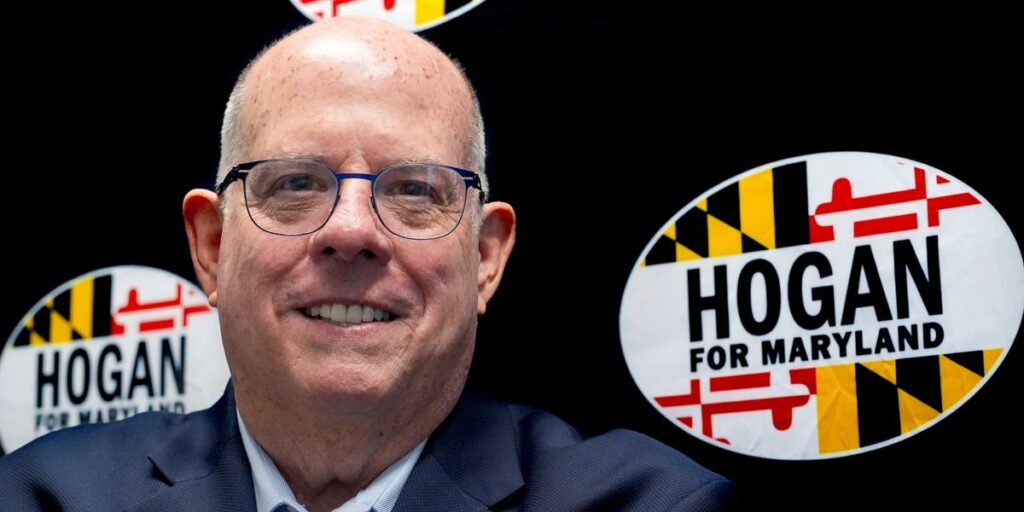In the heated race for the U.S. Senate in Maryland, former Republican Governor Larry Hogan finds himself facing a formidable opponent in Democrat Angela Alsobrooks, the current Prince George’s County executive. Acknowledging Hogan’s previously strong voter support, Alsobrooks has launched a targeted ad campaign aimed at dissuading those who once backed him. Her ad, titled “This Time’s Different,” prominently features former Hogan supporters, who express their apprehension about his candidacy based on concerns of a potential Republican-controlled Senate. The ad underscores the stakes involved, specifically warning against a national abortion ban, further tax breaks for corporations, and the influence of Republicans in judicial appointments. The sentiment conveyed is clear: voters are rethinking their previous choices based on the changing political landscape.
Hogan, having secured two terms as Maryland’s governor in a predominantly Democratic state, gained popularity by portraying himself as a pragmatic, pro-business counterweight to the Democratic legislature. Throughout his governorship, he cultivated an image of moderation, making inroads with independent and Democratic voters by prioritizing economic growth and stability. Now, as he seeks a Senate seat, Hogan is attempting to pivot further to the center on critical issues like abortion. He’s branded himself as “pro-choice” and made commitments to legislate federal protections for abortion access, aiming to cast doubt on Alsobrooks’ ability to serve as a crucial voice on these subjects.
Despite Hogan’s strategic moves, polls consistently indicate that Alsobrooks is leading him in the race. Her approach resonates with voters who are wary of a shift towards a Republican Senate that could push divisive policies. Hogan’s efforts to reframe himself as a centrist and independent-minded candidate might not be enough, considering the deeper trends in the state’s voter preferences. With Democrats holding a significant advantage in Maryland—nearly doubling the number of registered Republicans—Hogan’s path to victory is fraught with obstacles rooted in the political leanings of the electorate.
Another factor complicating Hogan’s campaign is his attempt to distance himself from former President Donald Trump. Maryland’s electorate has shown a clear aversion to Trump, making it essential for Hogan to navigate this politically charged terrain carefully. His strategy seems to hinge on appealing to moderate and independent voters who may recoil from the more extreme elements of the Republican platform. However, the effectiveness of this strategy remains uncertain, especially given his previous association with the Republican Party and its more controversial figures.
Financial dynamics also play a crucial role in this race. Hogan is investing heavily in his campaign, with reports indicating that he has reserved $19 million for TV advertising. Comparatively, Alsobrooks has only $2 million reserved for future ads, which raises questions about her campaign’s reach and visibility. Financial might does not guarantee electoral success, but it can significantly influence voter perceptions and engagement, especially in a campaign where media presence is necessary to overcome good name recognition and support.
Moreover, the strategy pursued by candidates across various states reflects a broader trend among politicians in contentious races. Similar to Hogan’s approach, other Democratic candidates, such as Ohio’s Sherrod Brown and Montana’s Jon Tester, are also engaging Republican voters to build coalitions that can withstand the political onslaught from their challengers. This cross-party outreach not only serves to bolster their credibility among undecided voters but also underscores the increasingly transactional nature of today’s electoral battles. Overall, Maryland’s Senate race encapsulates a dynamic political landscape where voter sentiments, party identities, and financial resources converge to shape the ultimate outcome.

